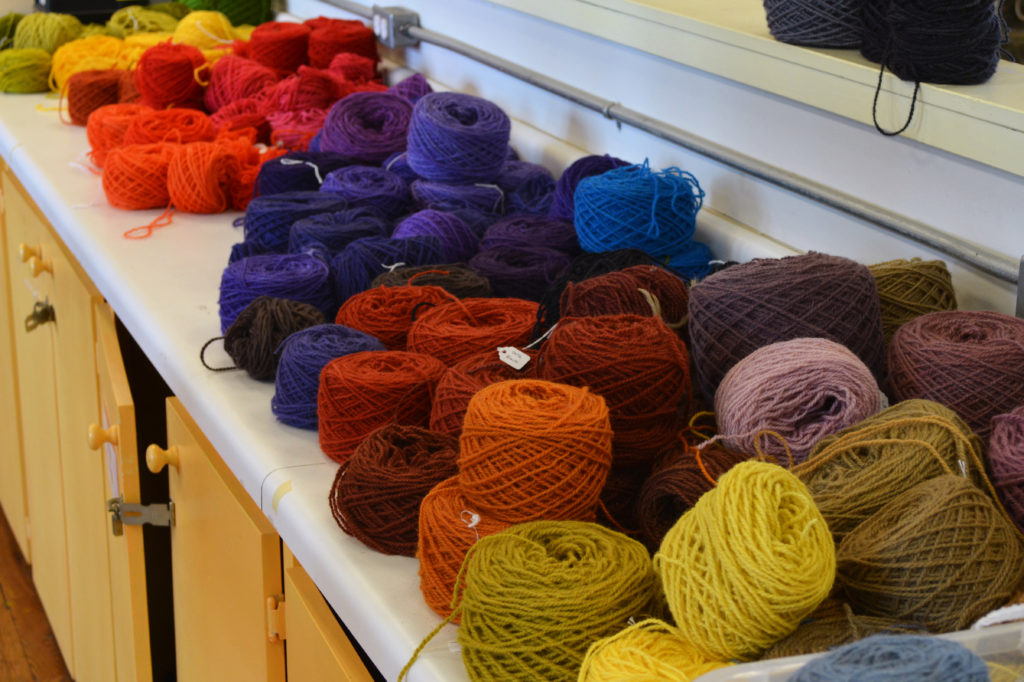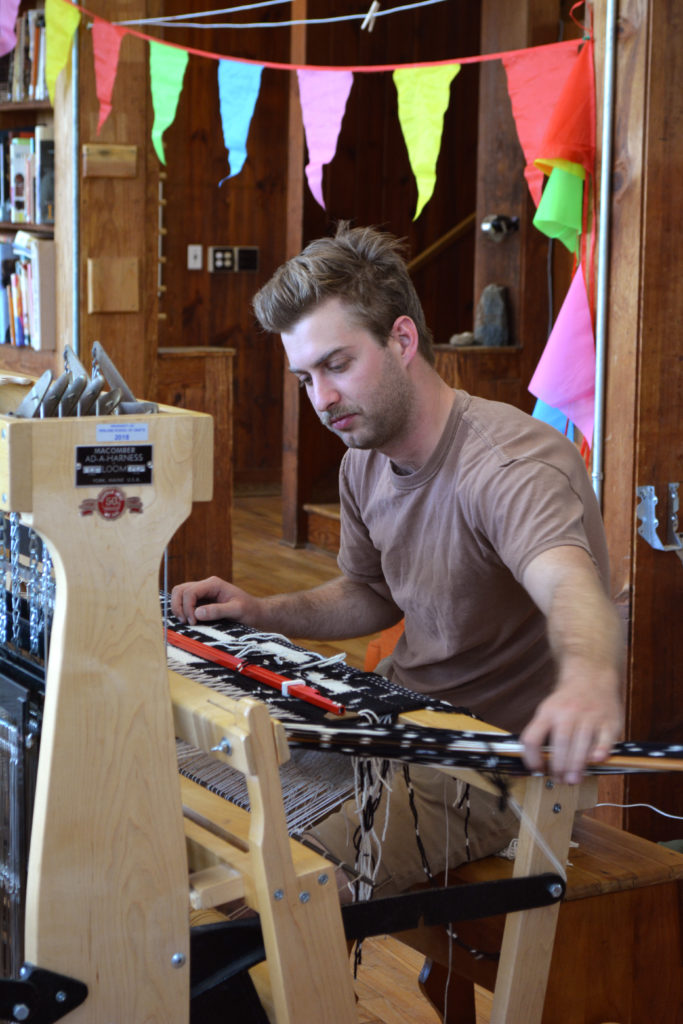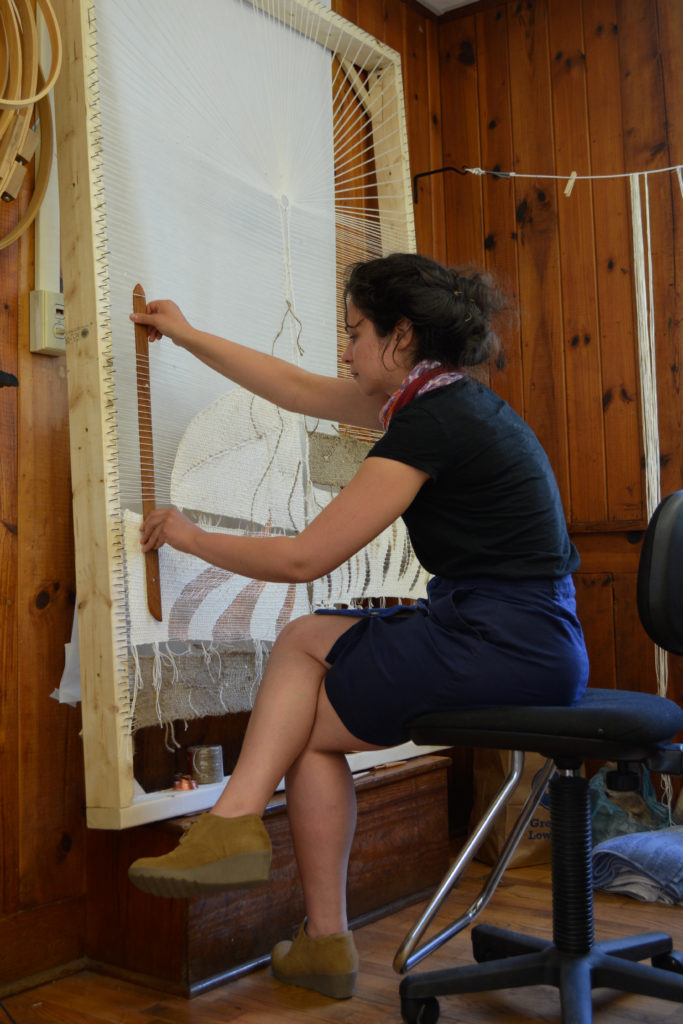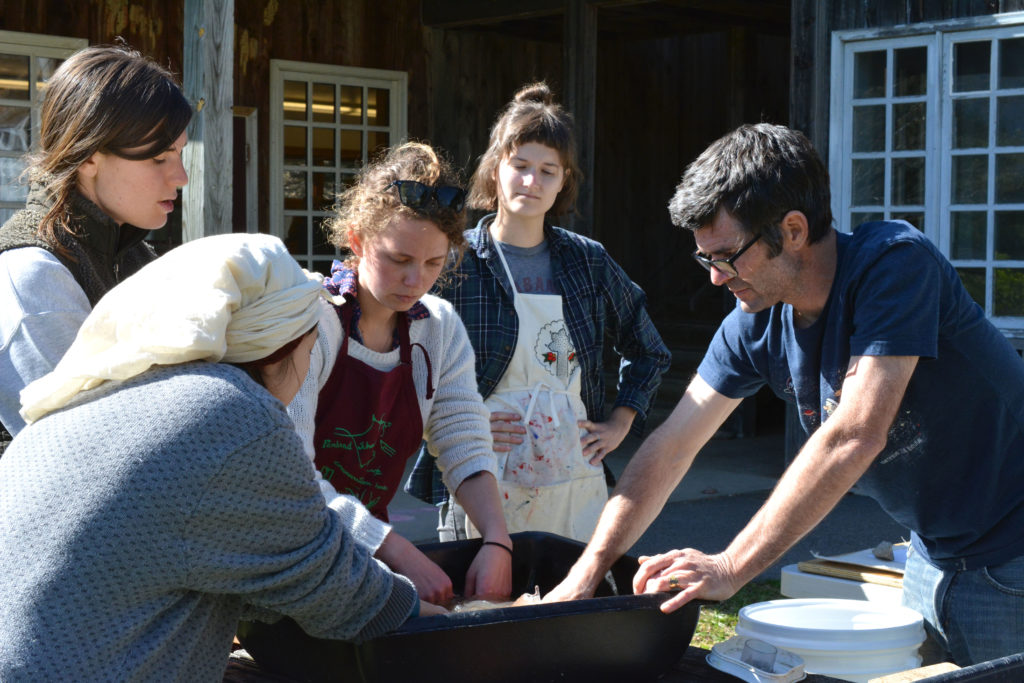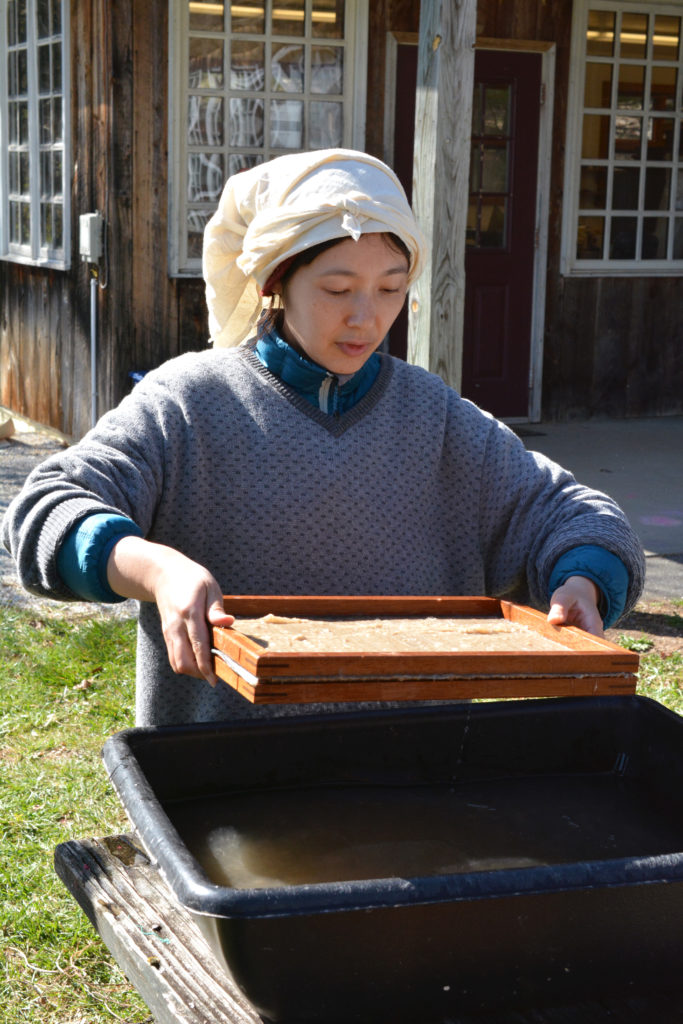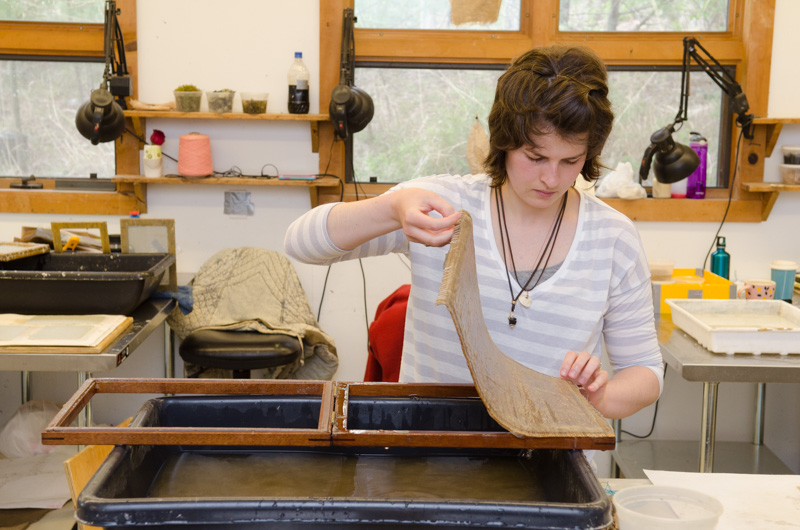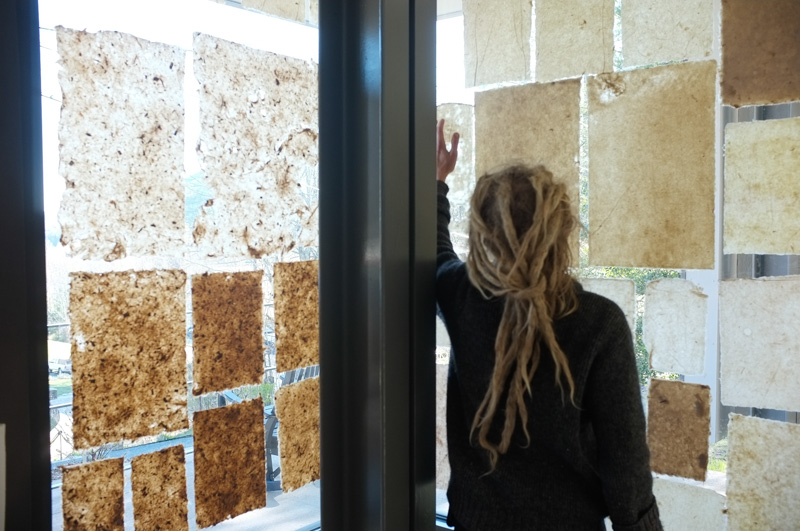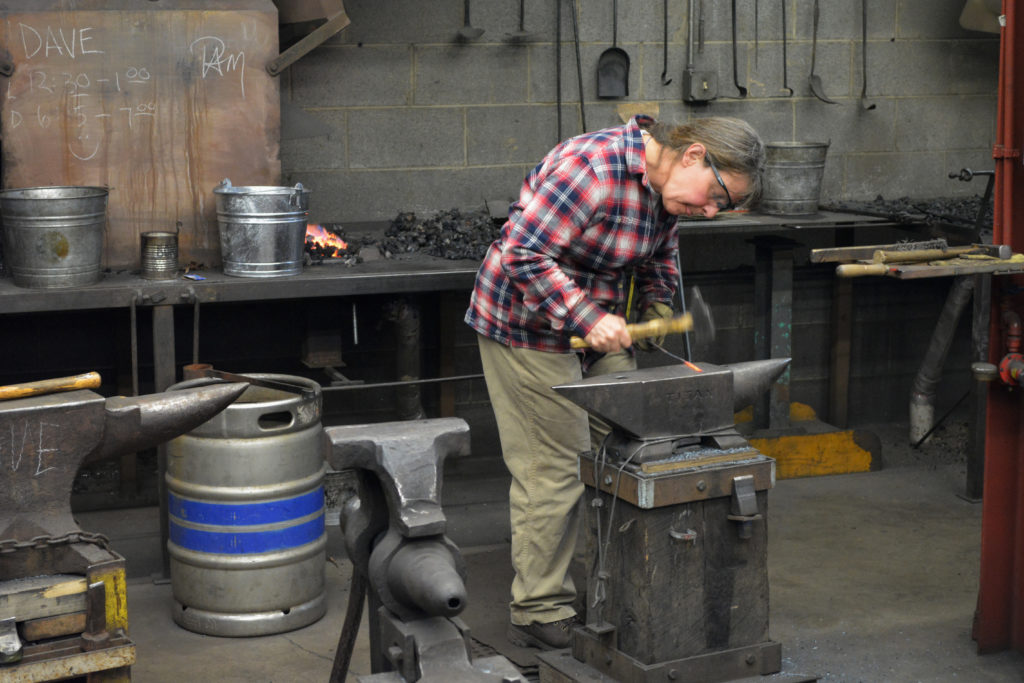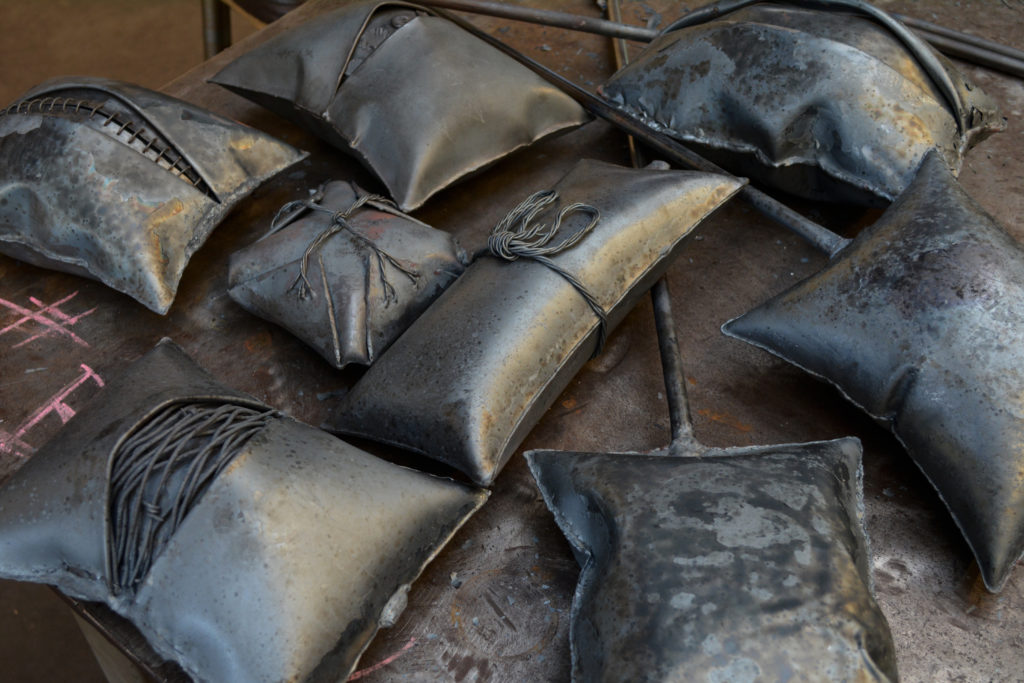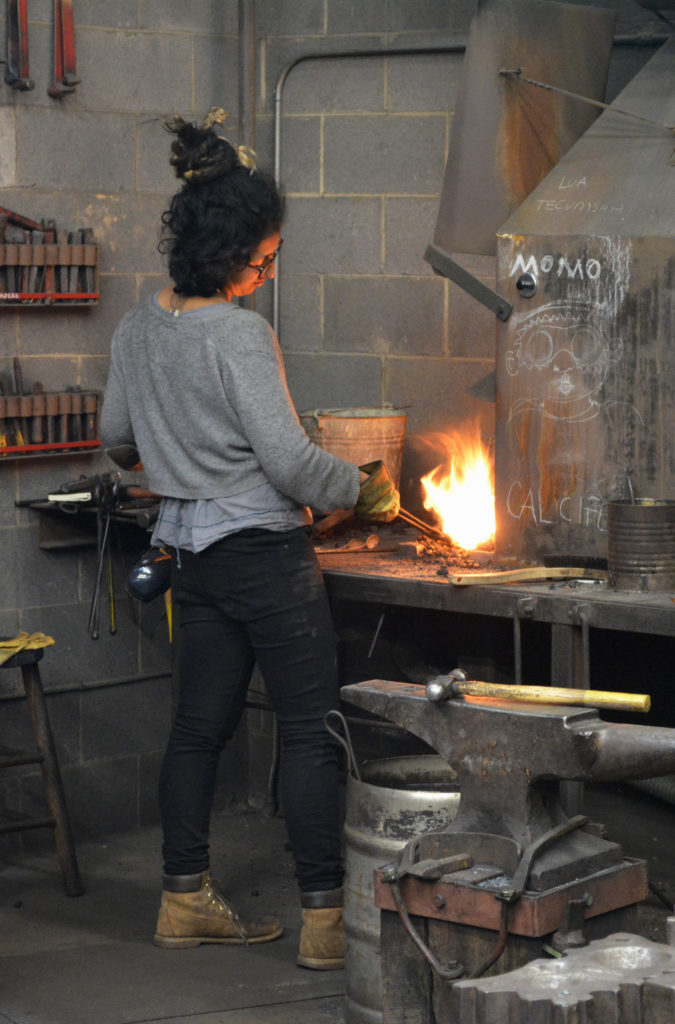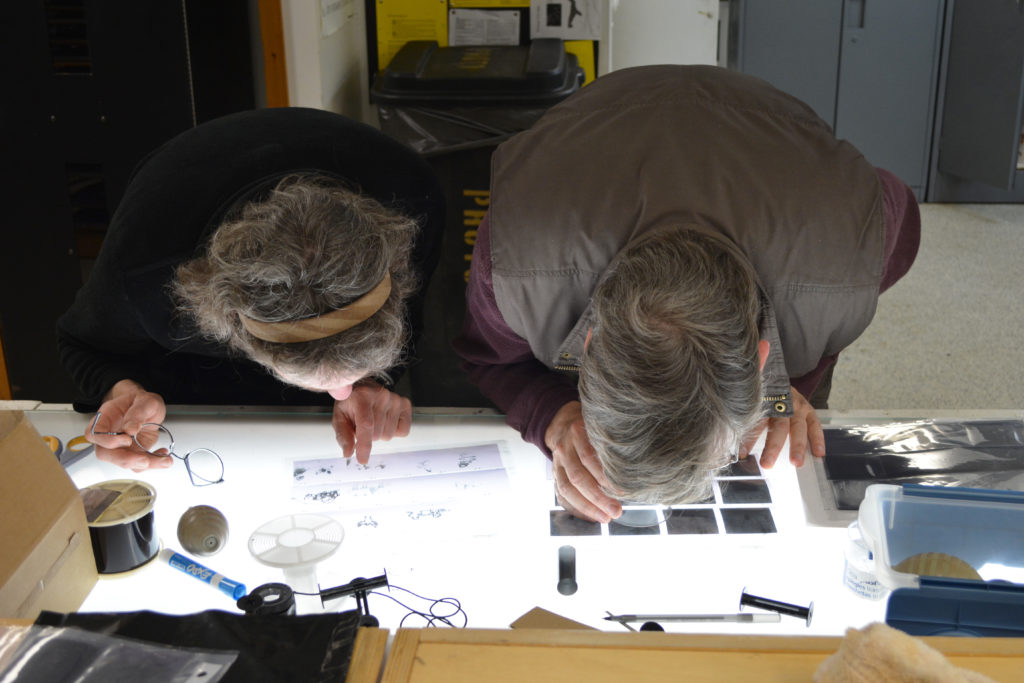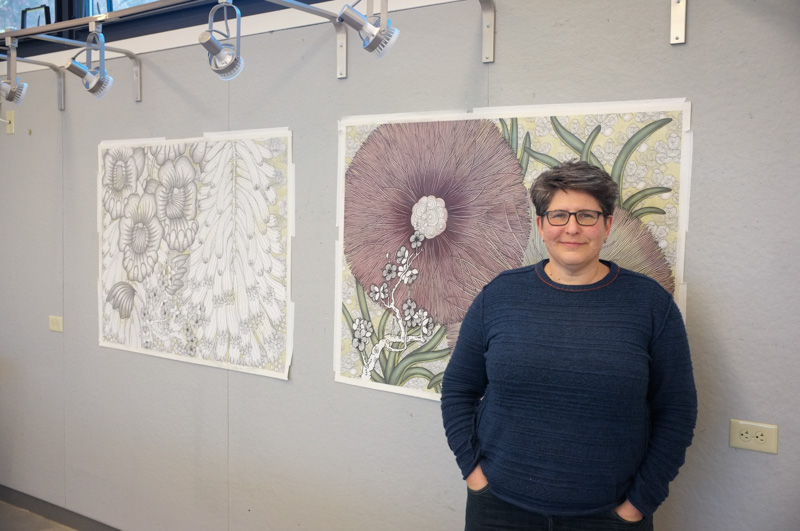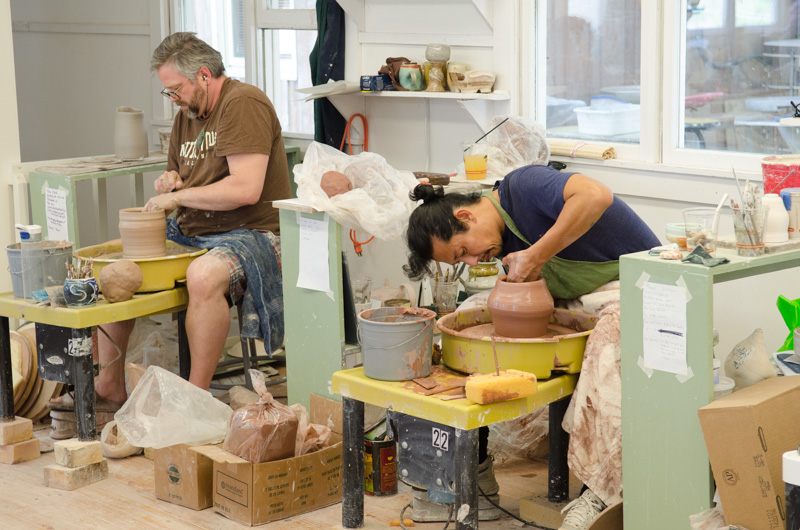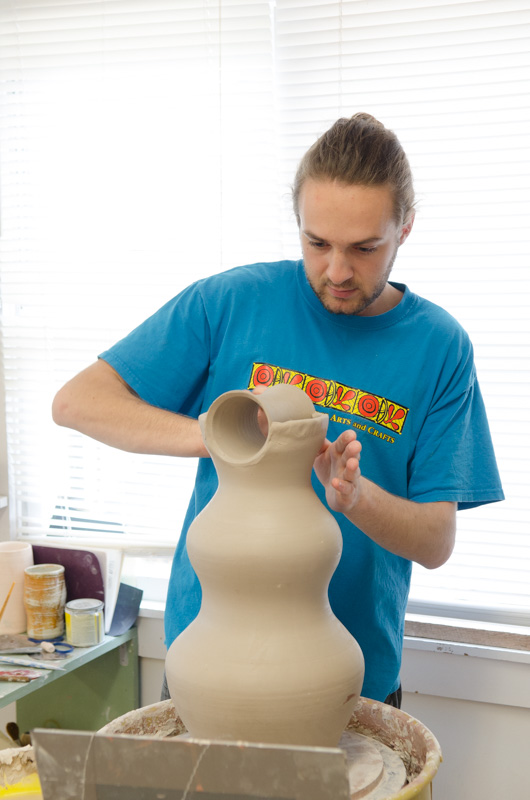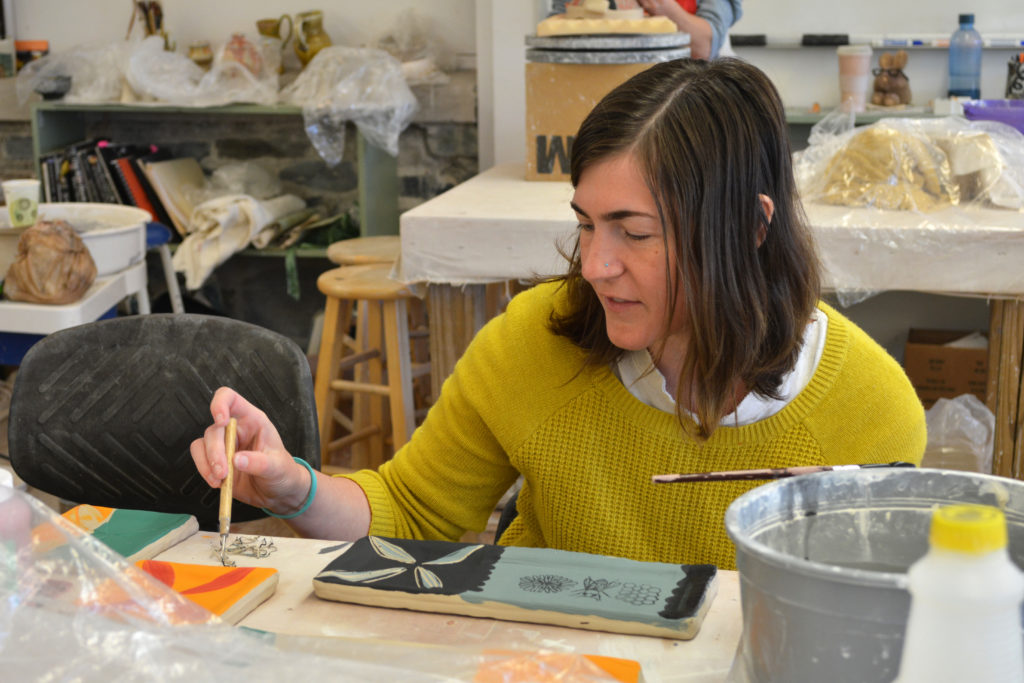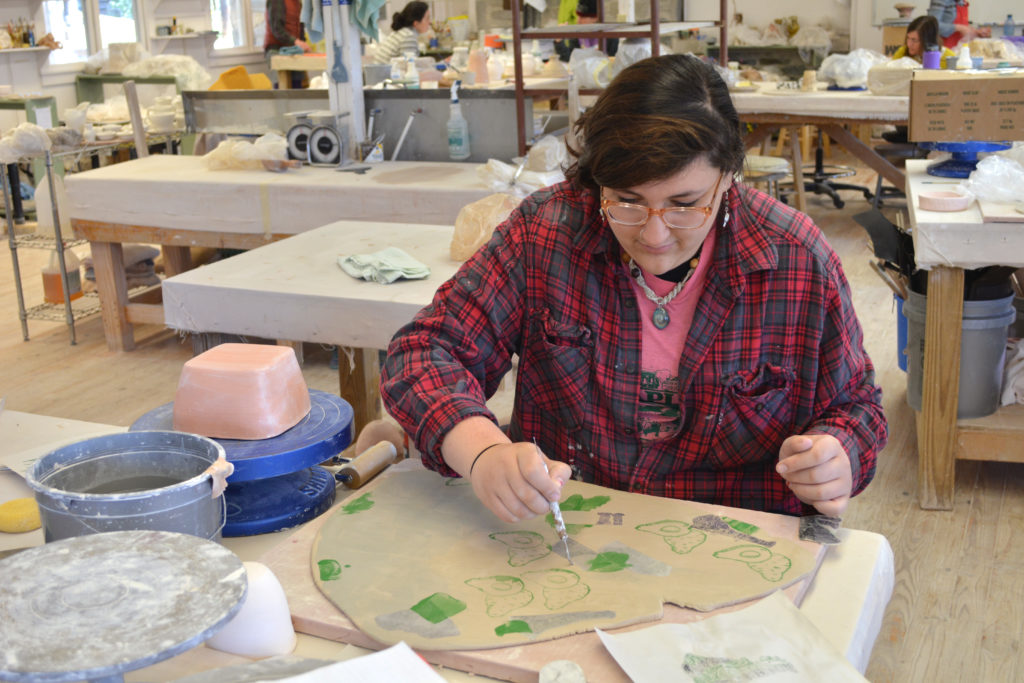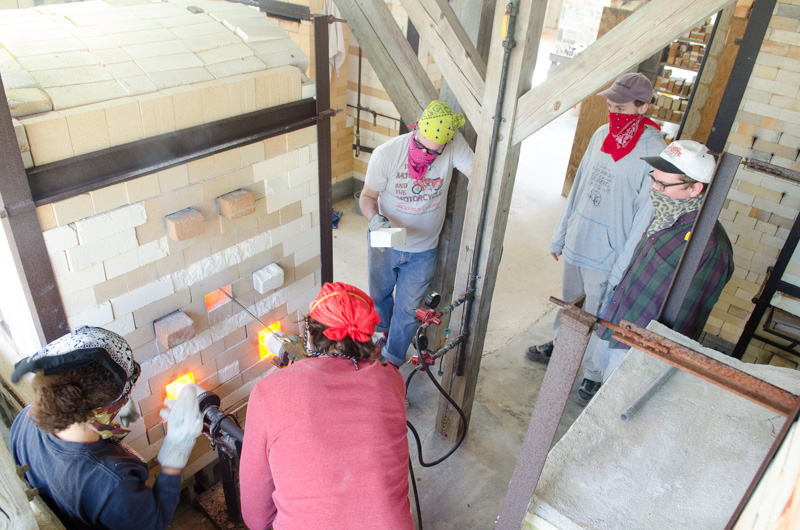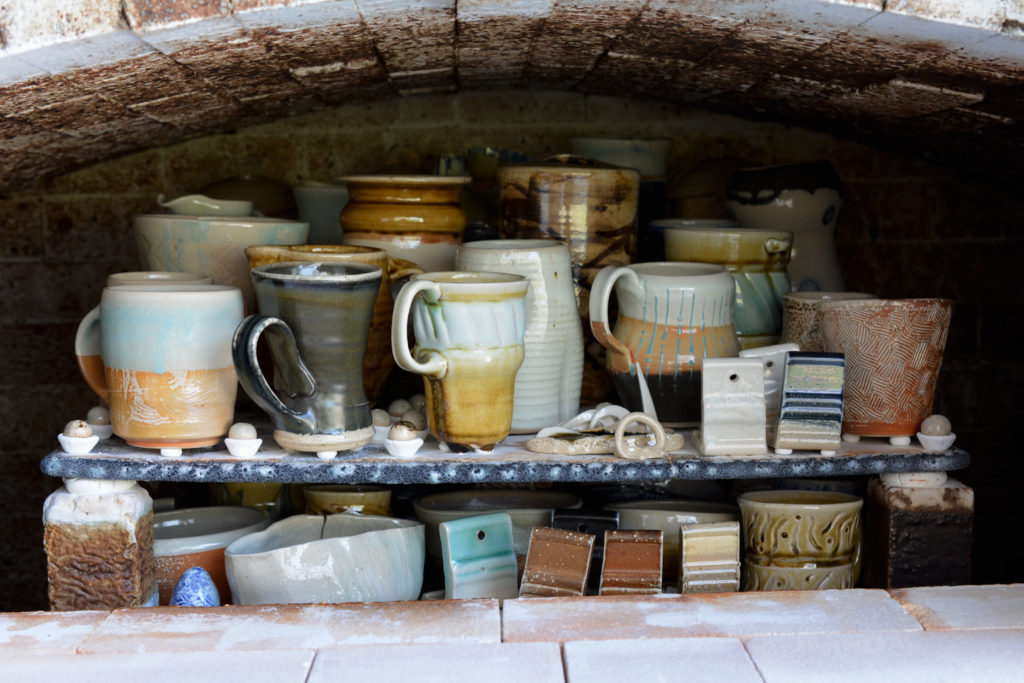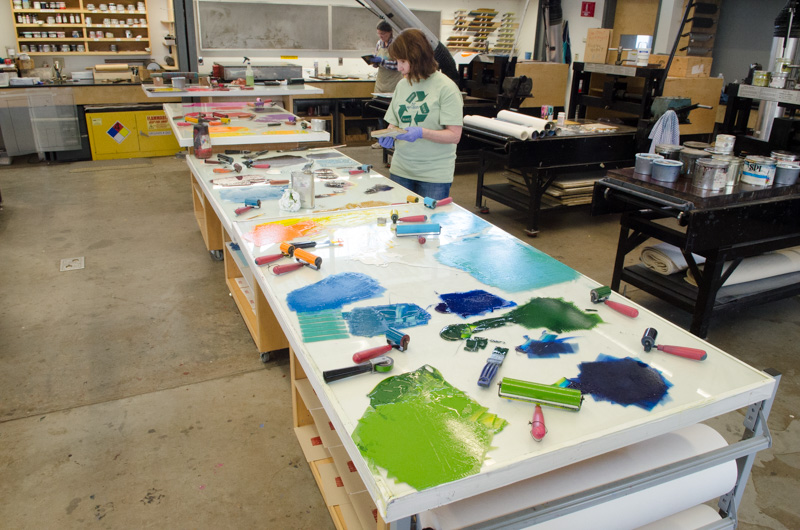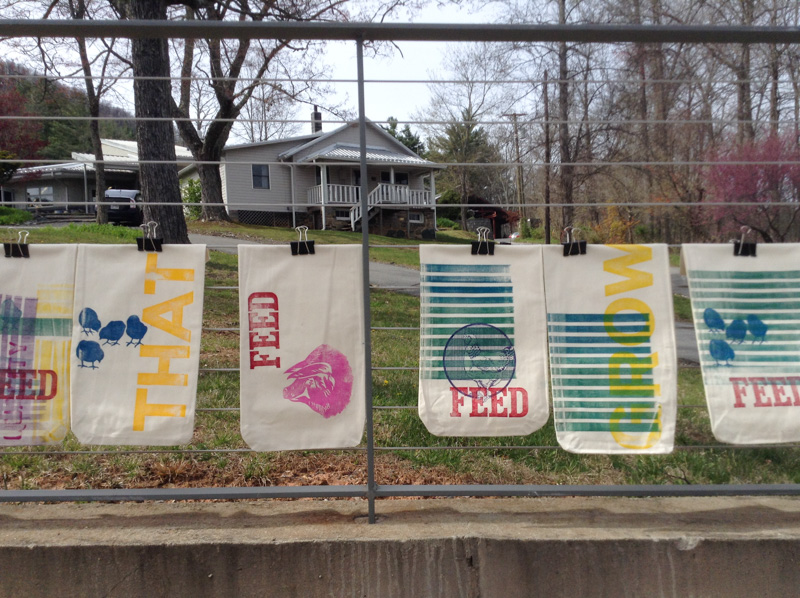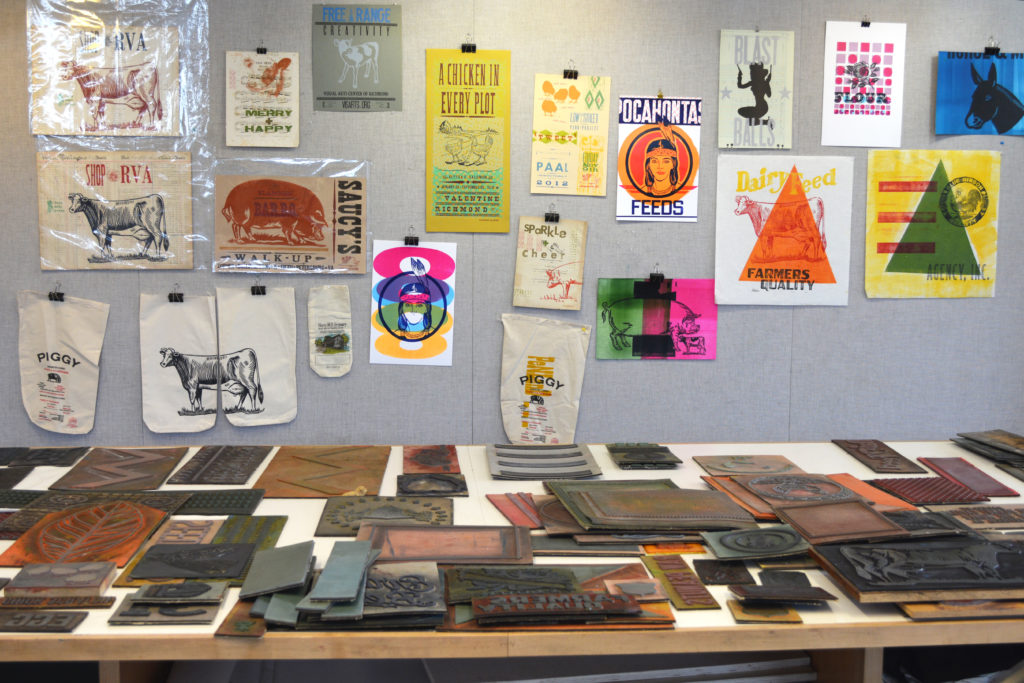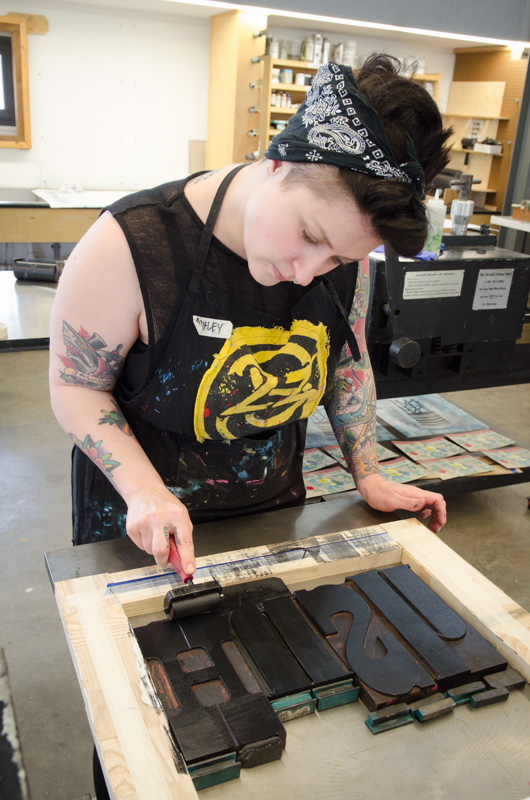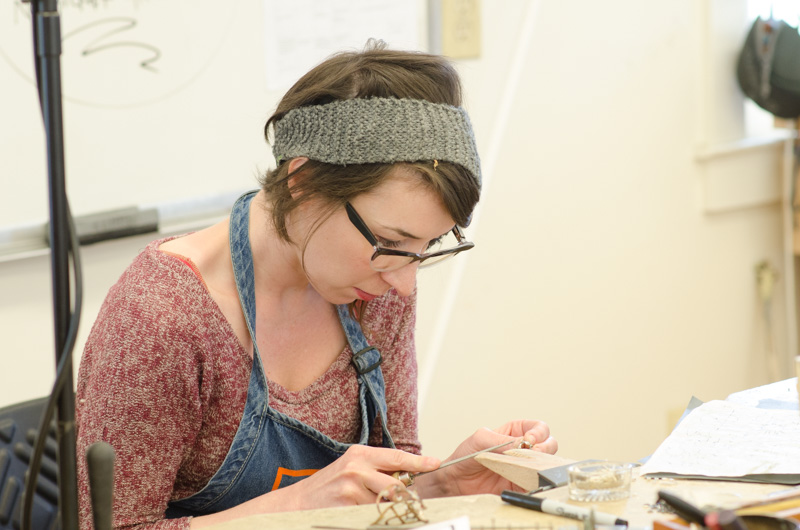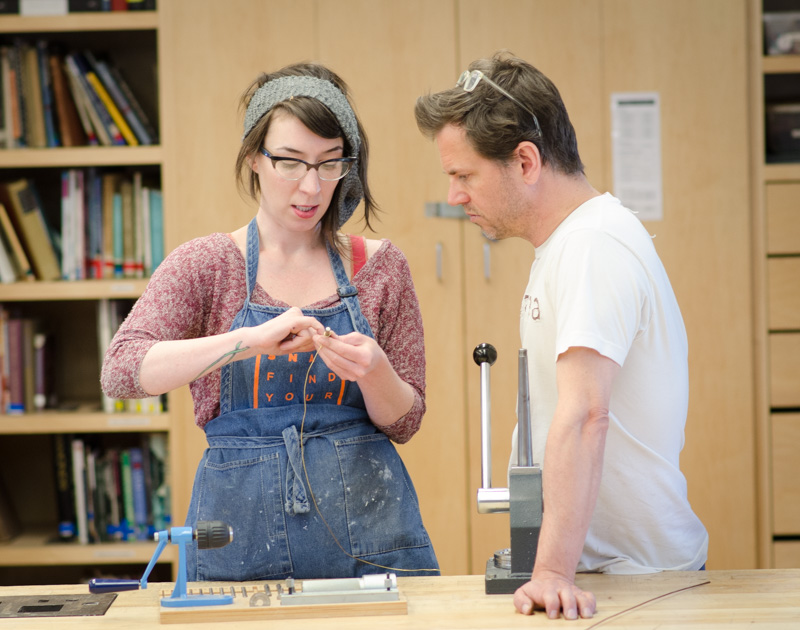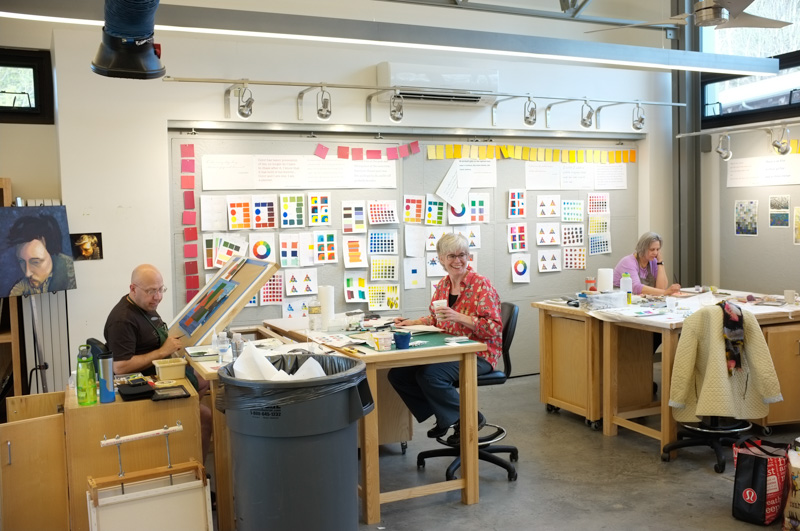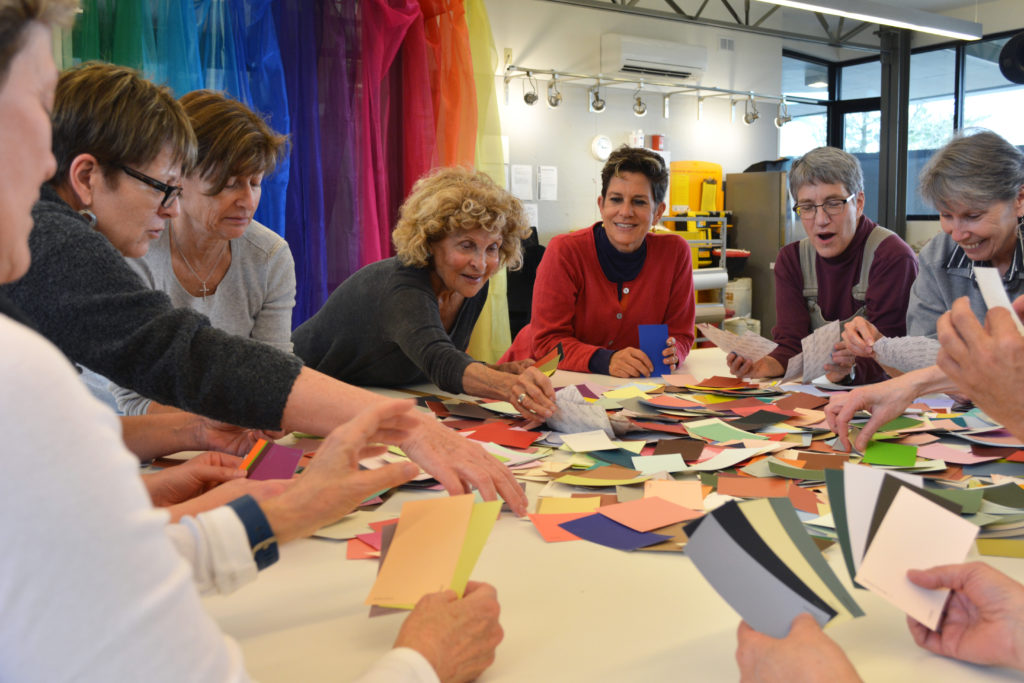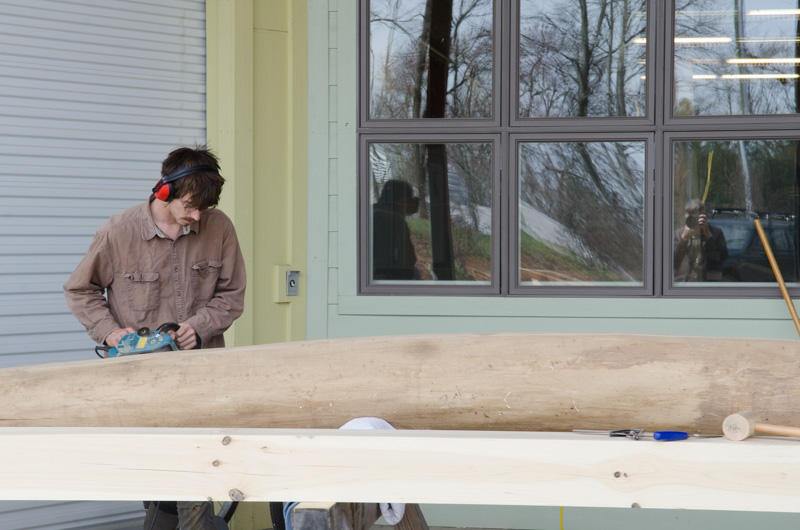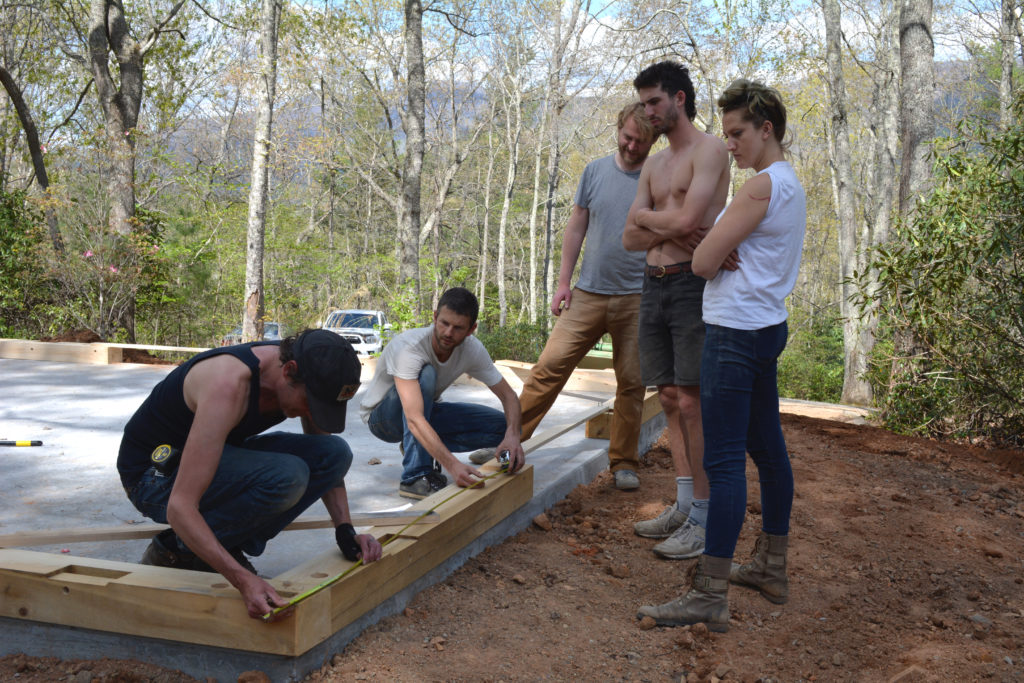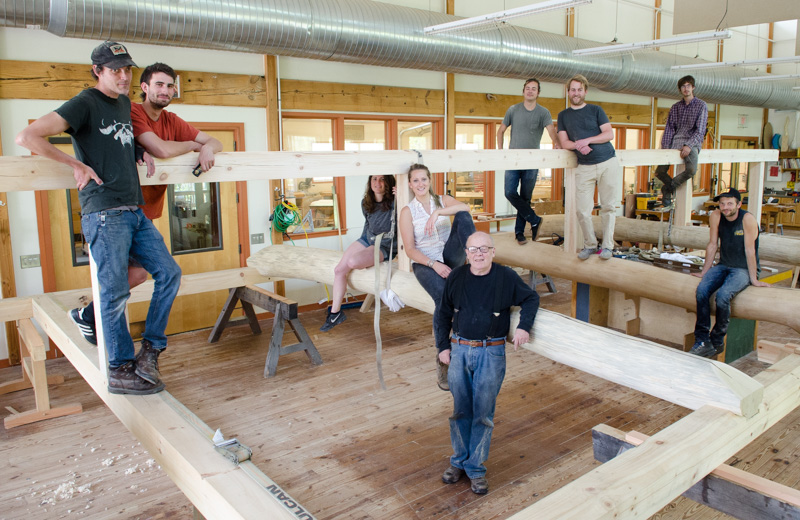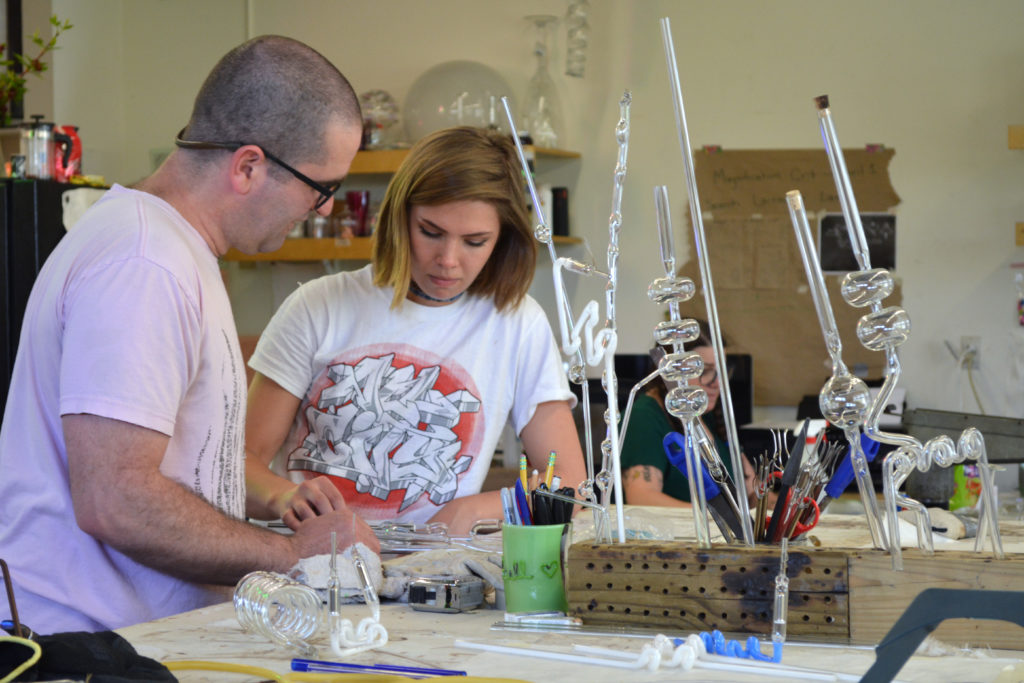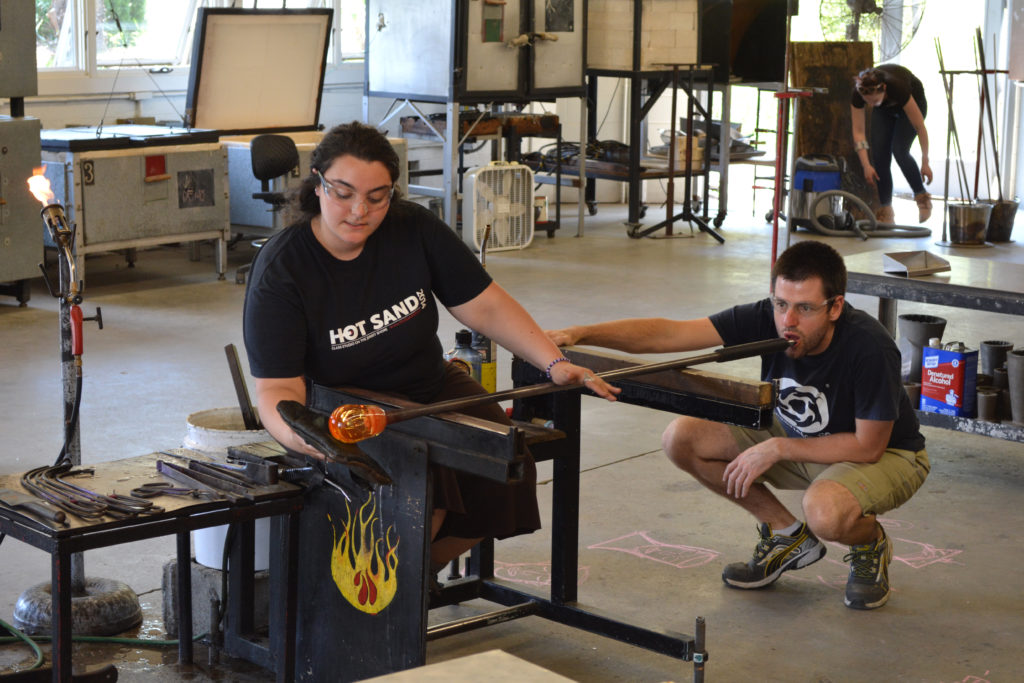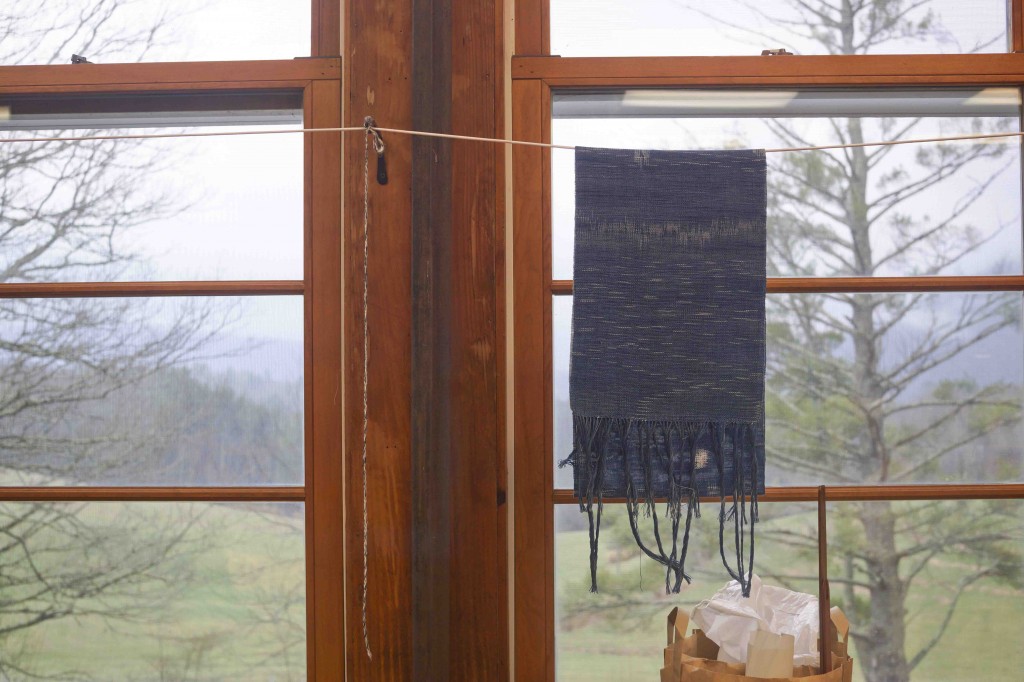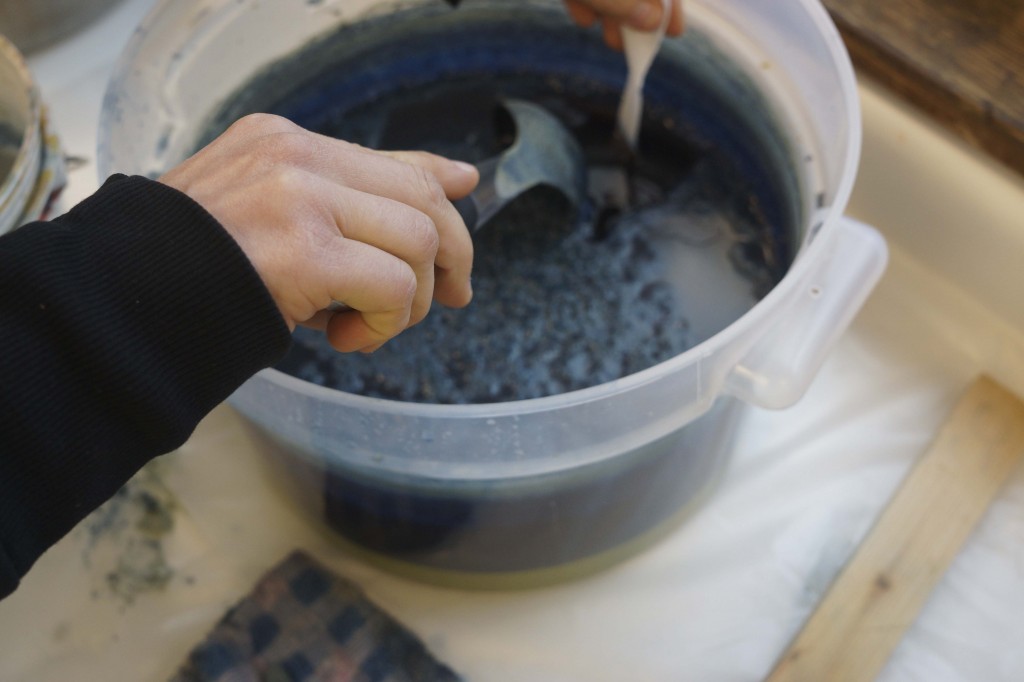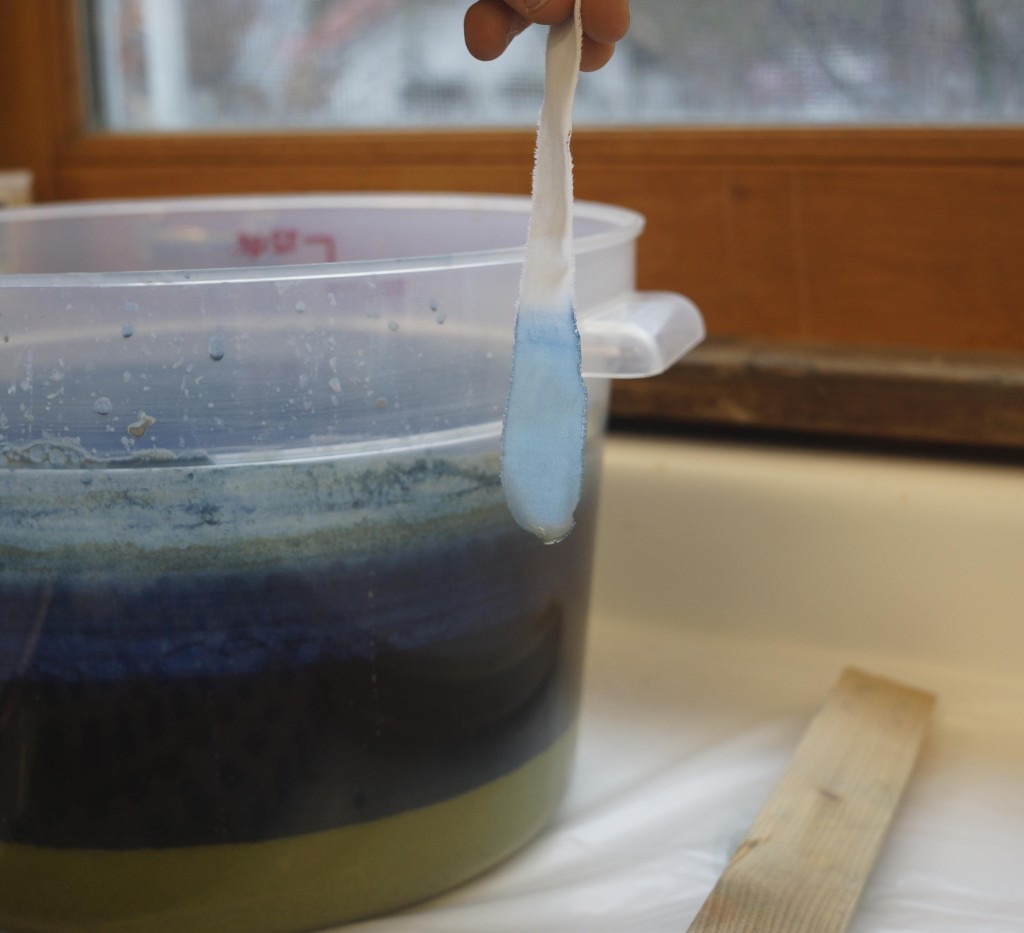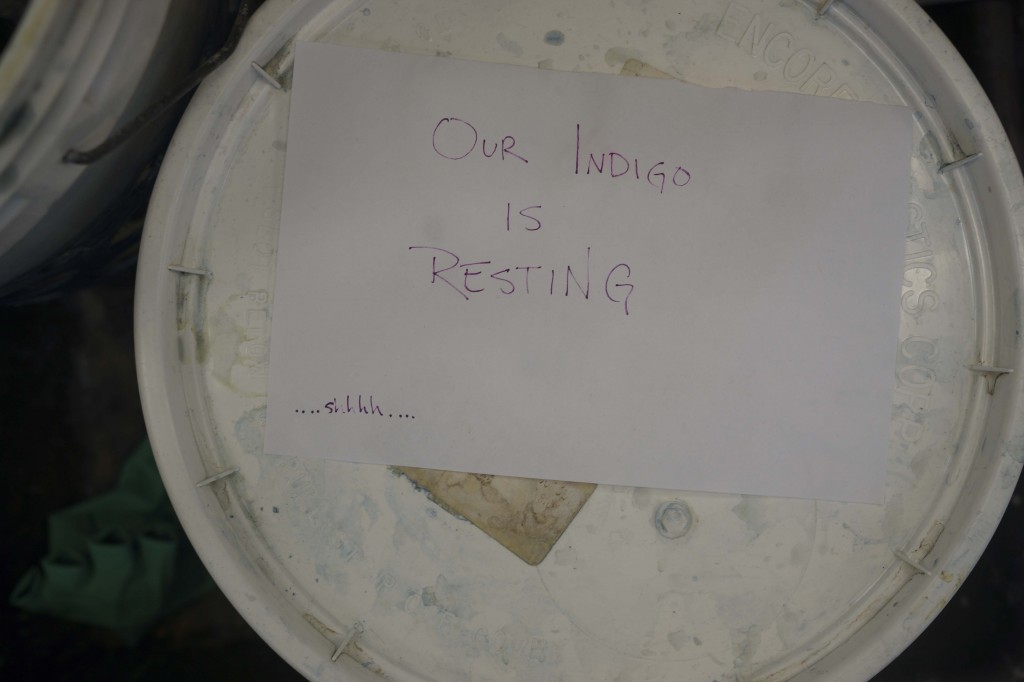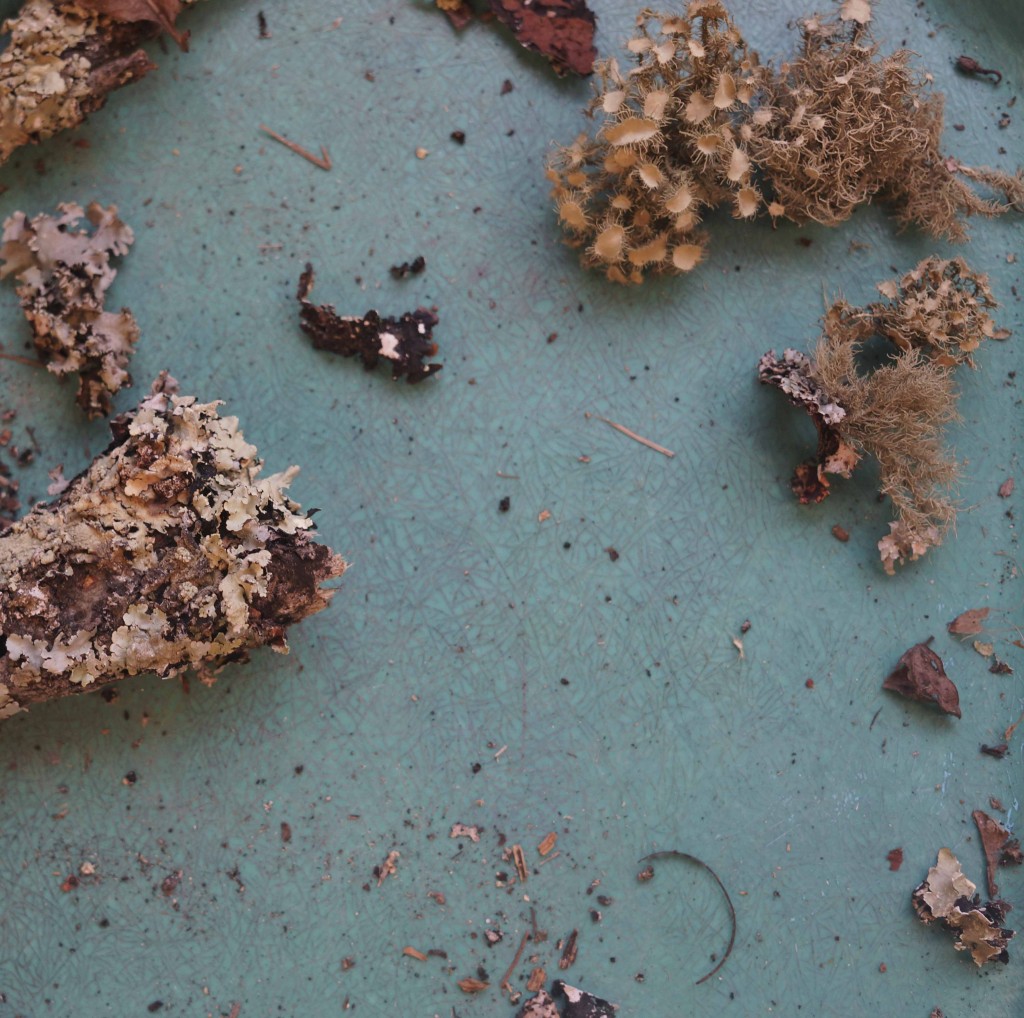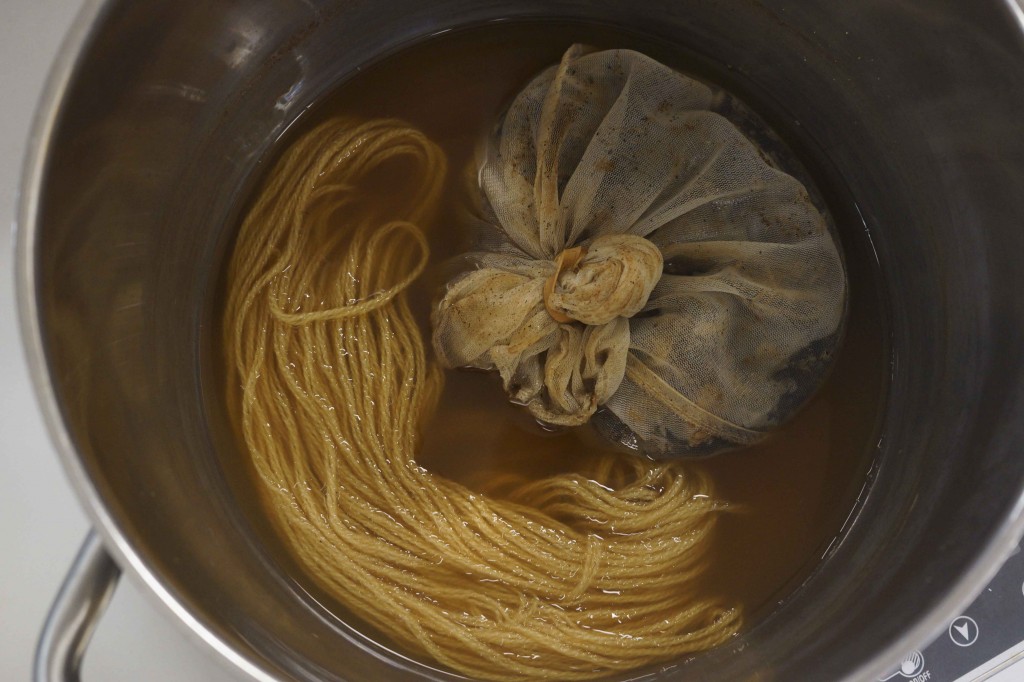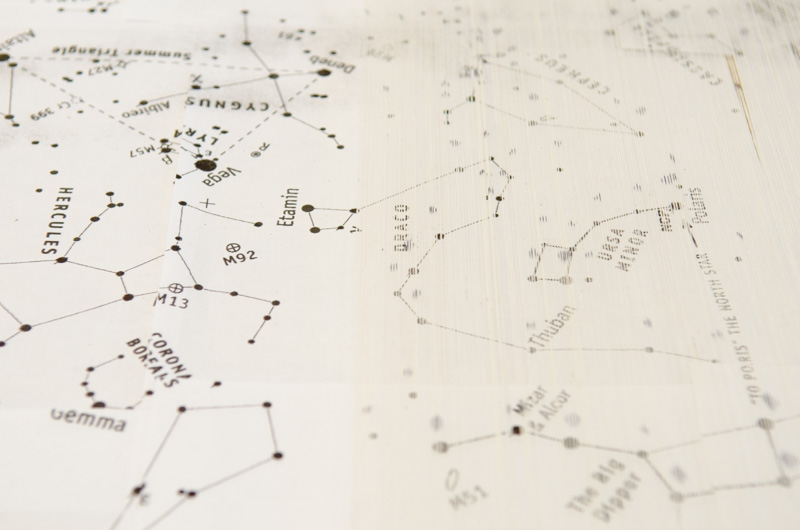
1.
Taped down on a table in resident artist Robin Johnston’s studio is a map of the stars. Next to it is smaller map, loose and folded and used, with a handwritten note in the margin: WE SAW FIREWORKS. A map handed out on the Fourth of July last summer, Robin tells us. Robin and her husband and her son (age 2) watched the sky light up above Penland.
2.
The moments of immanence that the artist experiences are collapsed into the work, to be revived or reimagined by the spectator when she enters its arena…–Ann Lauterbach, The Given and The Chosen
3.
Fireworks, family, the night sky, perception in summertime–Robin is collapsing these moments in her newest work. No, it’s more accurate to say: she’s recording them across the stretched map, each weft piece to be marked with a star’s position before it’s dyed and then the weaving begins. In the final part of the process, Robin will embroider the star charts of each season on the finished piece. This will take months and months. “I love tedious work,” she says quietly, grinning.
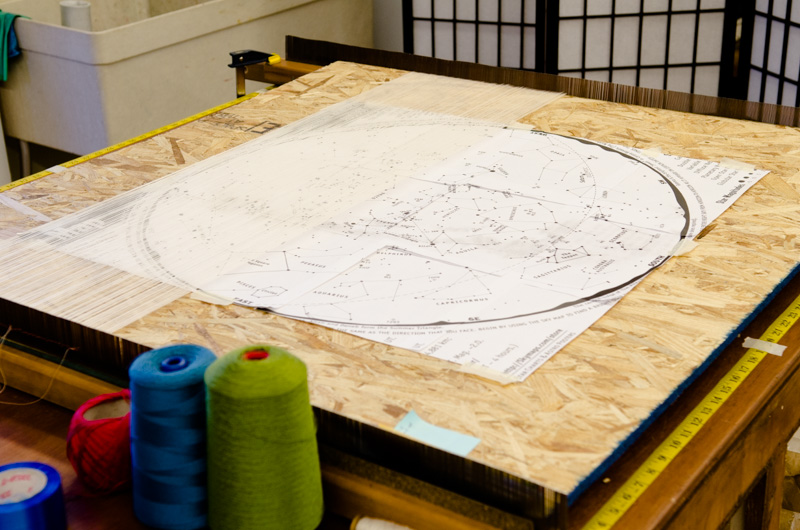
4.
If you don’t believe that Robin loves tedious work, please note:
She’s the artist who gathered around 4,000 walnuts, soaked over a hundred of them, wrapped yarn around each one, unwrapped the dried strands, and used them to weave 143 Walnuts, the piece hanging on the wall in the photograph below. Against another wall in her studio, next to an installation of walnuts still attached to strands suspended from the ceiling, is an old walnut picker. Her grandmother used it first–a handle attached to a metal cage, rolled over a carpet of grass to collect the fallen nuts on her sheep farm in North Wilkesboro, North Carolina. “Robin’s work deals with measuring time, capturing moments as they pass, and the sense of loss that accompanies their passing,” her website tells us.
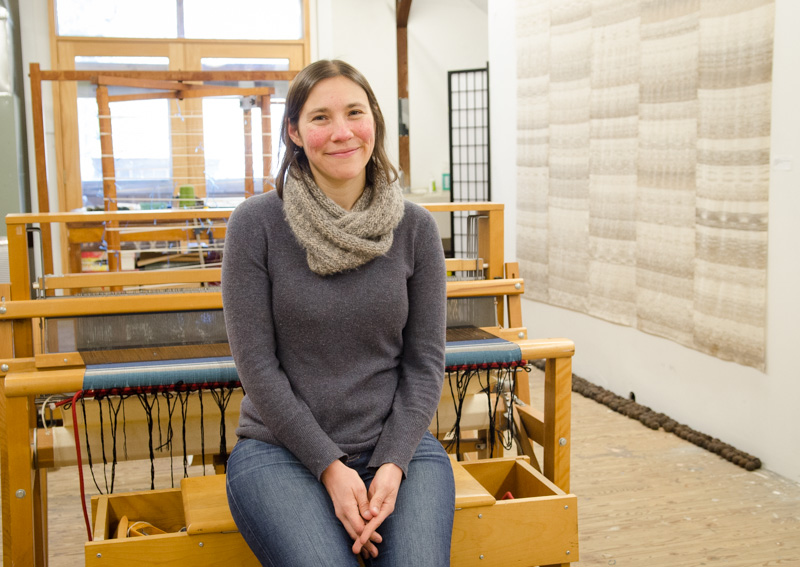
5.
One last note: “immanence” is the opposite of transcendence, and Robin Johnston is an artist residing in what’s in her earthly grasp: 4,000 walnuts, millions of stars, the moth wing-resilience of ikat tape, the fact that indigo is insoluble in water and must first be reduced to a form called indigo white. When the thread is dipped and then pulled from the vat, Robin explains, a molecular change occurs. The indigo reverts to its insoluble form. It retakes its blue from the air.
Photographs by Robin Dreyer; writing by Elaine Bleakney



